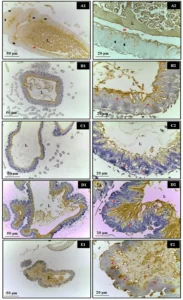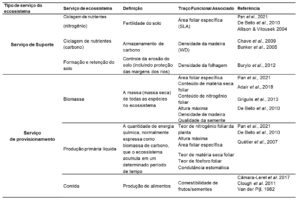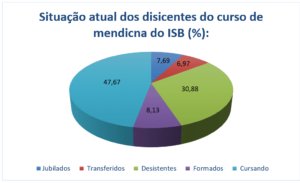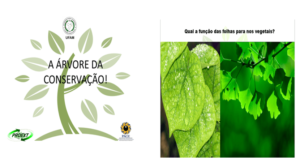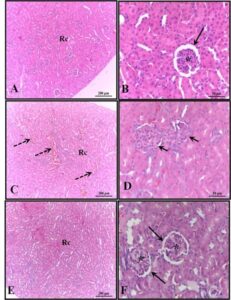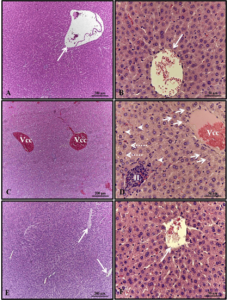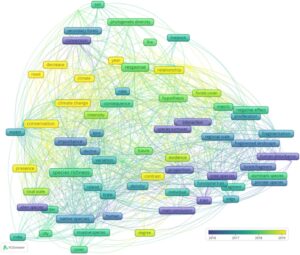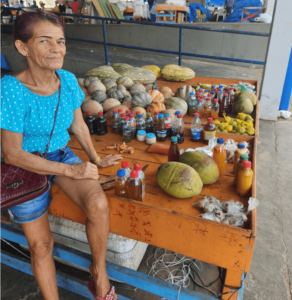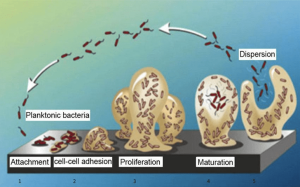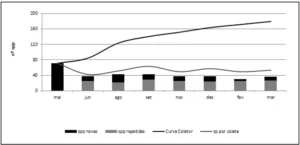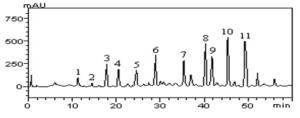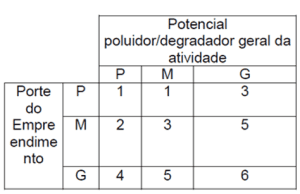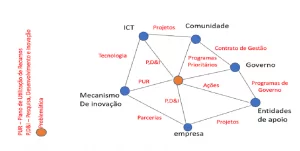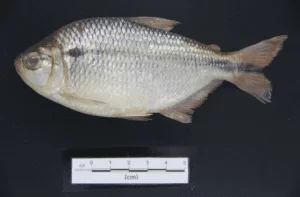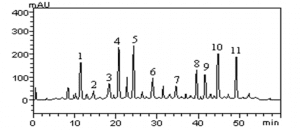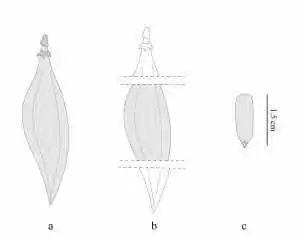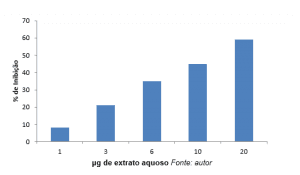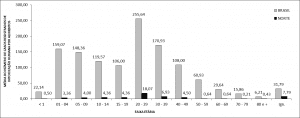ORIGINAL ARTICLE
SILVA, Leticia Rodrigues da [1], PEREIRA, Livia Maria Marques [2], MUNIZ, Fausto José de Araújo [3], PALMA, Mariza Brandão[4], SOARES, Anísio Francisco [5]
SILVA, Leticia Rodrigues da. et al. Perceptions of students from two schools in the municipality of Paudalho/PE regarding teenage pregnancy. Revista Científica Multidisciplinar Núcleo do Conhecimento. Year. 08, Ed. 07, Vol. 01, pp. 89-102. July 2023. ISSN: 2448-0959, Access link: https://www.nucleodoconhecimento.com.br/biology/perceptions-of-students, DOI: 10.32749/nucleodoconhecimento.com.br/biology/perceptions-of-students
ABSTRACT
Adolescence, a period of transition between childhood and adulthood, refers to the time when individuals undergo physiological changes that are also reflected in social changes with the awakening of sexuality. During this time, young people explore this novelty, dealing with romantic and sexual desires, and from this, a lack of guidance stemming from a scarcity of information can impact the adolescent’s health, social context, and future. School dropout, discrimination, and the potential biological consequences of pregnancy are examples of how a young person’s life can be affected. Thus, this study evaluated the perception of teenage pregnancy and its repercussions. The study was conducted in two public schools in the municipality of Paudalho/PE, with the participation of 193 students aged 15 to 19, who answered questionnaires on the topic studied. Based on the data obtained, educational measures were implemented to guide students on behaviors that should be adopted to prevent sexually transmitted infections and unplanned pregnancies.
Keywords: Adolescence, Education, Pregnancy, Prevention, Sexuality.
INTRODUCTION
Adolescence refers to the period from 15 to 19 years of age and is marked by anatomical, hormonal, and psychosocial transformations. During this stage of life, various unique experiences occur that contribute to the construction of an individual’s personality, subsequently reflecting in adulthood. The effects of sexual maturation and the development of sexuality translate into the exercise of sexual freedom, including sexual debut, as the first sexual relationship generally occurs during adolescence (FIEDLER, ARAÚJO, SOUZA, 2015; ARAÚJO et al., 2016). With the advent of technology, adolescents have acquired habits that expose them to sexual stimuli at an earlier age (NERY et al., 2020), which, combined with a lack of guidance on sexuality, influences the occurrence of early and unwanted pregnancies (VITOR et al., 2021).
In Brazil, about 18% of registered births in 2015 occurred in women aged 10 to 19. These figures are close to the global incidence, as in 2017 approximately 20% of baby births were from mothers up to 19 years old. Of this total, 95% occurred in developing countries, with the highest incidence of teenage pregnancy associated with socially vulnerable groups (NERY et al., 2020). Silva, Araújo, and Carvalho (2021), in an epidemiological study conducted in the state of Pernambuco, collected data from the DATASUS database related to live births, which showed that in 2018, 18% of total live births were to teenage mothers. Of the approximately 14.4 thousand annual births in Recife, on average, 1,929 (13.4%) were to teenagers.
The consequences of early pregnancy are not only biological but also psychosocial, directly affecting the parents, the newborn, and part of the family. Dropping out of school, family conflicts, social discrimination, withdrawal from social groups, postponement of plans and dreams, isolation, worries, and unemployment are some of the consequences of teenage pregnancy, affecting the pregnant adolescents more than their partners (ARAÚJO et al., 2016; RODRIGUES, SILVA, GOMES, 2019).
Early pregnancy is directly associated with the lack of future prospects for the teenager, who sees pregnancy as a possibility to change their own reality. Considering the problems already mentioned, it is necessary to implement and maintain strategies to reduce the incidence of pregnancy in adolescents. However, the low level of education of those involved is a factor that hinders the necessary control (LOPES et al., 2020), and reducing this rate is a challenge for the public health system (PINHEIRO, PEREIRA, FREITAS, 2019). Since young parents are still in school, this study aimed to investigate the knowledge of school adolescents about the aforementioned issue and understand the prevalence of pregnancy among students in two public state schools in Paudalho/PE. Also, based on the obtained data, it aimed to provide support for the development and implementation of school actions focused on preventing teenage pregnancy.
METHODOLOGY
Initially, in order to acquire a foundation for the project’s development and gather information about adolescence, sexuality, and early pregnancy, a literature review was conducted using the Google Scholar and Scielo databases. The project was developed with the participation of students aged 15 to 19, regularly enrolled in public schools that operate on a full-time basis, known as Schools of Reference in High School (EREM) in the state of Pernambuco (PERNAMBUCO, 2008). The EREM Confederação do Equador and EREM Herculano Bandeira, both located in the municipality of Paudalho/PE, were involved in the research. The research was characterized as descriptive, exploratory, and qualitative, exploring a spectrum of opinions and different representations of the proposed subject. The described methodological steps allowed the construction of knowledge capable of explaining the incidence of early pregnancy since descriptive research requires the investigator to gather a series of information about the subject of investigation (FIEDLER, ARAÚJO, SOUZA, 2015; COSTA et al., 2022). For this purpose, a questionnaire in the form of a survey was created and administered among students enrolled in the two EREMs. The questionnaire was developed using a free application provided by Google, which can create forms through a spreadsheet on Google Drive (SILVA et al., 2022). The applied questionnaire included questions aimed at evaluating the students’ perception of sexuality and early pregnancy:
- If you have had a sexual experience, at what age did it happen? And did you use any contraceptive method?
- Do you know any preventive or contraceptive methods to avoid teenage pregnancy? If yes, please provide the methods you know or have heard of.
- What do you think about an unexpected pregnancy during adolescence?
- Have you received any guidance on sex and sexuality?
- Do you know anyone who has experienced a ‘teenage pregnancy’? If yes, what did you observe that changed in that person’s life? Why do you think this happened to them?
- In your opinion, what are the positive and negative aspects of a ‘teenage pregnancy’?
Following the questionnaire administration, the obtained data were organized in an Excel spreadsheet (Microsoft) for reading and evaluation of each response. Subsequently, a content analysis of the data was conducted, allowing the selection of the most emergent responses. Based on these responses, figures were developed to quantitatively present some data according to Fiedler, Araújo, and Souza (2015).
The obtained data were used to support the development of educational actions, designed and implemented by teachers and healthcare professionals from the municipal health reference centers, targeting the students of the school community and specifically focusing on the topic of teenage pregnancy, aiming for health promotion and education.
RESULTS AND DISCUSSION
The study had a total participation of 193 students who voluntarily answered the questionnaire. Not all questions were answered by all students, as the students were free to answer only what they felt comfortable with. It was found that 30.1% of the students who responded identified as male, 67.4% as female, and 2.8% preferred not to disclose their gender. Regarding the distribution between the schools, 69.4% of the students who responded to the questionnaire were students of EREM Confederação do Equador, and 30.6% were students of EREM Herculano Bandeira.
When asked if they had already experienced their first sexual experience, it was found that 37% responded affirmatively, while 62% said no. The age range of students who responded ‘yes’ was from 13 to 17 years old (Figure 1). Additionally, of the 37% of students who stated they had experienced their first sexual encounter, 10% reported not using contraceptives. This is concerning, as the non-use of contraceptive methods is the main factor leading to unplanned pregnancies (FIEDLER, ARAÚJO, SOUZA, 2015). Silva, Gomes, and Santos (2019) found that, in a study conducted in the interior of Pernambuco, out of the 11 investigated adolescents, all declared being pregnant due to carelessness in the use of contraceptive methods, and also stated that they engaged in unprotected sex.
Figure 1. Questionnaire data regarding the students’ responses about experiencing their first sexual encounter
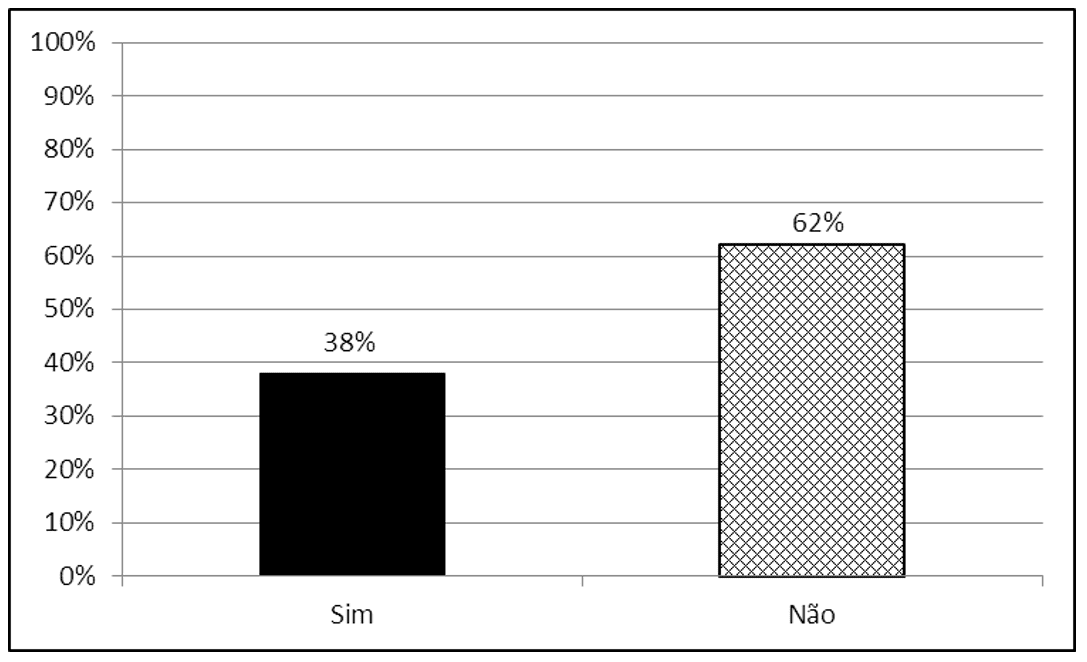
When asked about knowing about contraceptive methods, 17% (29) of the students responded that they did not know any methods. Among those who were aware, the most frequent responses were (Table 1): ‘condom’ 71% (119 times); ‘birth control pills’ 5% (9 times); and ‘IUD (Intrauterine Device)’ 7% (11 times). These results align with what was found in the study by Almeida et al. (2016) and Santiago (2019), where it was found that the contraceptive method most known by young people is the condom, popularly known as ‘camisinha’ in Portuguese.
Table 1. Contraceptive methods known by students
| Contraceptive methods: | Number of students who stated knowing the method: |
| Condom/Preservative | 119 |
| Contraceptive pill | 9 |
| IUD | 11 |
Source: Data obtained from the survey conducted by the authors.
The data presented in Figure 2 demonstrate that 12% of the students stated that teenage pregnancy is a normal occurrence, while 88% of the students expressed concern about it. These findings align with the results of the investigation conducted by Santana et al., (2022), where a similar percentage, below 15%, of surveyed adolescents viewed teenage pregnancy as normal.
Figure 2. Students’ opinions on teenage pregnancy
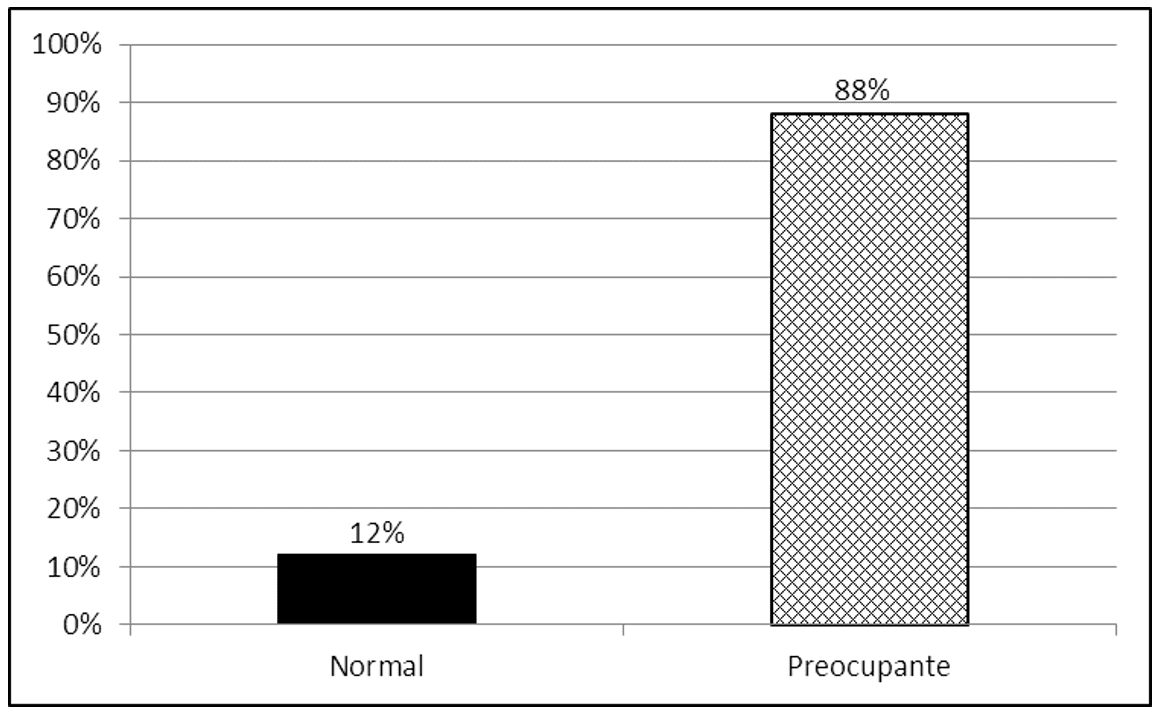
It is known that sexual education is still predominantly seen as a family obligation. Cultural, political, and religious factors influence the clarity of the topic. A relationship of trust and respect between the adolescent and the responsible adults for their education is important for addressing the subject naturally. However, when there is a gap in the relationship between parents and children, guidance on sexuality is often repressed or neglected (SOARES et al., 2021). Nevertheless, the development of public policies in a democratic state needs to be based on the perspective of respecting human rights, built on the best available scientific evidence, and respecting the principle of the secular state (CABRAL and BRANDÃO, 2020). The results presented in Figure 3 may reflect the gap in the relationship between parents and children. This is because it was found that, although 61% of adolescents stated they had guidance on sex and sexuality, 19% of adolescents stated they did not receive guidance on the subject, and 20% responded that they may have received guidance on the subject.
Figure 3. Guidance on sex and sexuality received by adolescents
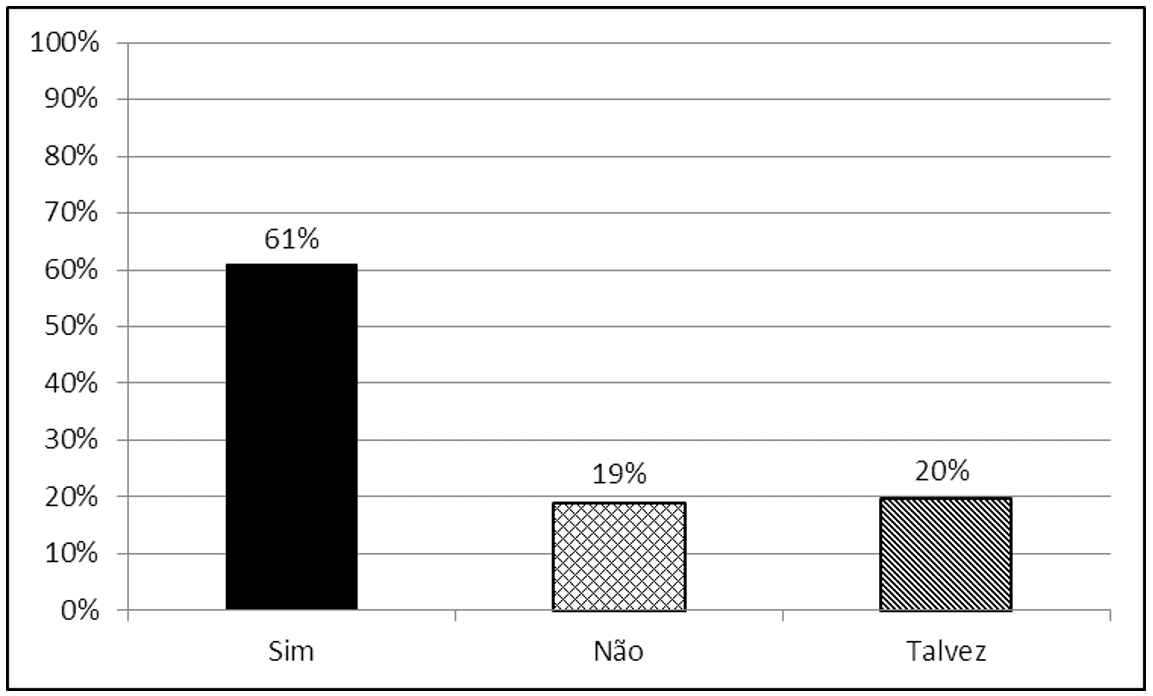
When asked if they knew someone who had experienced “teenage pregnancy” (Figure 4), 78 (82%) students stated that they knew someone, and only 17 (18%) claimed not to know anyone, corroborating with what was observed in Silva et al.’s (2022) research, which showed that only 13.3% of participating students in their study did not know anyone who had experienced early pregnancy. Furthermore, among the responses to this question in this study, 7 students stated that they were going through it. This makes it more evident that teenage pregnancy is a common issue that can have problematic consequences and should be prevented through educational actions to provide young people in the community with knowledge about the anatomy and physiology of their own bodies. This knowledge can empower them to take measures to prevent not only unplanned pregnancy but also sexually transmitted infections (SOARES et al., 2021).
Figure 4. Students’ responses regarding knowing someone who has experienced “teenage pregnancy”.
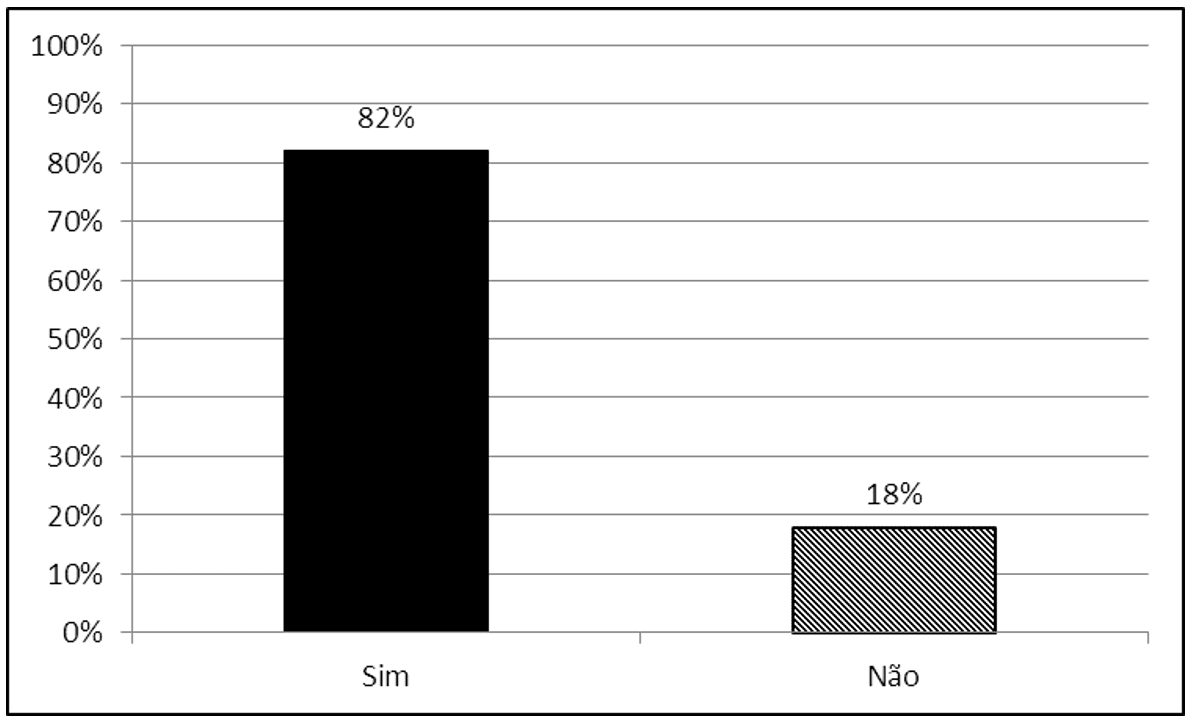
The students were also asked about the reasons that led teenagers to experience early pregnancy. “Did not use protection” was the most frequent response. Furthermore, regarding this question, to the students who answered “yes,” they were asked what changes had been observed by the students regarding the life of the individual who went through early pregnancy (Table 2).
Table 2. Most frequent responses regarding the changes observed by the students regarding the life of the individual who went through early pregnancy, as known by them.
| Emerging responses: |
| “Disrupted life” |
| “Dropped out of school” |
| “Lost childhood” |
| “Changes in the body” |
| “More responsibility” |
Source: Data obtained from the research conducted by the authors.
According to Table 2, “Dropped out of school” was one of the most recurring responses given by students when asked about the changes they observed in the life of an individual who experienced early pregnancy, known to them. This is related to the study by Azevedo et al., (2015), which found that school dropout among pregnant adolescents is one of the main consequences of teenage pregnancy, hindering the professional development of the parents as well as their entry into the job market.
In addition to the prejudices faced, teenage mothers are also susceptible to incidents of Pregnancy-Induced Hypertension (PIH), anemia, gestational diabetes, and birth complications. These factors determine an increase in maternal and infant mortality (RODRIGUES, SILVA, GOMES, SANTOS, 2019; AZEVEDO et al., 2015). The consequences faced can also affect the mental health of those who assume motherhood and fatherhood prematurely (ACIOLI et al., 2020). An analysis of the mental health of pregnant teenagers conducted in a public hospital in Pernambuco identified that most teenage girls did not have a mental disorder; however, most participants were in possible mental distress (DALIA et al., 2022).
When asked about the positive and negative aspects of early pregnancy, it was observed that, among the most frequent responses, no positive aspect was found (Table 3). It is noticeable that, although the students have an idea of some social problems that can be faced by teenage mothers and fathers, they are unaware of the possible biological consequences for both the mother and the baby. Therefore, in educational actions, it is important to emphasize all the factors involved in conceiving and raising a child as a teenager.
Table 3. Frequent responses of students when asked about the aspects they consider positive and negative about teenage pregnancy
| Emerging responses | |
| “There are no positive aspects”
“More responsibility” “School delay” “Difficulty in finding a job” “Interferes with future plans” |
|
Source: Data obtained from the research conducted by the authors.
The data collected and outlined above were guiding for planning actions within the student community. According to Machado et al., (2021), the school is a learning environment present in the lives of adolescents, and according to the Health in School Program (PSE)[6], health education actions in school settings are promising for the quality of life of children and adolescents. Thus, discussions were held among the students, teachers, and professionals from the municipal health reference centers. This was done interactively with the students through dialogue between the participants and the students, where they were guided in constructing scientific knowledge in virtual formats, unlike what was done by Santana et al., (2022), who conducted intervention actions in person. The validation of information disseminated on digital media and social networks was also discussed, building perception and understanding of fake news. The students created digital media that were used on school platforms and social networks with information about unplanned pregnancy, contraceptive methods, and prevention of sexually transmitted infections.
CONCLUSIONS
Based on what has been conducted, it can be concluded that, despite the advent of the internet, which has made information more accessible, young people and adolescents receive little guidance and direction on what information is accurate and important to access. Consequently, adolescents go through the period of sexual maturation with little or no guidance on sexuality, leading to unprotected sexual experiences, which can ultimately result in sexually transmitted infections and/or early pregnancy. In this sense, adolescent pregnancy is a recurring issue that can have various consequences not only for the health and social life of adolescent parents but also for the life of the baby.
REFERENCES
ACIOLI, Moab Duarte et al. Percepções das Mudanças na Vida Social e Psíquica de Adolescentes Grávidas em Unidade Básica de Saúde em Olinda, Pernambuco. Brazilian Journal of Development, v. 6, n. 8, p.61898-61912. 2020. DOI:10.34117/bjdv6n8-567.
ALMEIDA, Rebeca Aranha Arrais Santos et al. Conhecimento de adolescentes relacionados às doenças sexualmente transmissíveis e gravidez. Revista Brasileira de Enfermagem, 70(5):1087-94. 2017. DOI: http://dx.doi.org/10.1590/0034-7167-2016-0531.
ARAÚJO, Rayanne Lima Dantas et al. Gravidez na Adolescência: Consequências Centralizadas para a Mulher. Temas em Saúde, v:16, n. 2, p 568. 2016. Disponível em: <https://temasemsaude.com/wp-content/uploads/2016/08/16231.pdf>. Acesso em: 28 jun. 2023.
AZEVEDO, Walter Fernandez et al. Complicações da gravidez na adolescência: revisão sistemática da literatura. Einstein (São Paulo), 13(4):618-26. 2015. DOI: https://doi.org/10.1590/S1679-45082015RW3127.
CABRAL, Cristiane da Silva; BRANDÃO, Elaine Reis. Gravidez na adolescência, iniciação sexual e gênero: perspectivas em disputa. Cadernos de Saúde Pública, 2020. DOI: 10.1590/0102-311X00029420.
COSTA, Ana Beatriz Barbosa da et al. Avaliação do conhecimento sobre o tema: sexualidade entre adolescentes de escolas públicas. Latin American Journal of Development, v.4, n.2, p.420-432. 2022. DOI: 10.46814/lajdv4n2-012.
DALIA, Bianca Eustáchio et al. Análise da Saúde Mental de Adolescentes Gestantes em um Hospital de Pernambuco. Research, Society and Development, v. 11, n. 9, e57211932241. 2022. DOI: http://dx.doi.org/10.33448/rsd-v11i9.32241.
DIAS, Bruna Fernanda; ANTONI, Natalia M; VARGAS, Deisi. Perfil clínico e epidemiológico da gravidez na adolescência: um estudo ecológico. Arquivos Catarinenses De Medicina, 49(1):10-22. 2020. Disponível em: <https://revista.acm.org.br/index.php/arquivos/article/view/596/394>. Acesso em: 28 jun. 2023.
FIEDLER, Milla Wildemberg; ARAÚJO, Alisson; SOUZA, Marcia Cristina Caetano de. A Prevenção da Gravidez na Adolescência na Visão de Adolescentes. Texto Contexto Enfermagem, 24(1): 30-7. 2015. DOI: http://dx.doi.org/10.1590/0104-07072015000130014.
LOPES, Mislaine Casagrande de Lima et al. Tendência temporal e fatores associados à gravidez na adolescência. Revista da Escola de Enfermagem da USP, 54:e03639. 2020. DOI: https://doi.org/10.1590/S1980-220X2019020403639.
MACHADO, Flávia Christiane de Azevedo et al. Educação em Saúde para Sensibilizar Adolescentes Escolares para a Vacinação Contra o Papiloma Vírus Humanos. Revista Ciência Plural. 2021.
NERY, Carmen Lucia Pereira Dias. et al. Fatores Associados à Gravidez em Adolescentes Escolares no Brasil. Adolescência & Saúde, v. 17, n. 2, p. 07-16. 2020. Disponível em: <https://cdn.publisher.gn1.link/adolescenciaesaude.com/pdf/v17n2a02.pdf>. Acesso em: 28 jun. 2023.
PERNAMBUCO. Lei Complementar nº 125, de 10 de julho de 2008. Dispõe sobre a criação do Programa de Educação Integral, e dá outras providências. Diário Oficial do Estado, Pernambuco, PE. Disponível em: <https://legis.alepe.pe.gov.br/texto.aspx?id=5148&tipo=TEXTOATUALIZADO>. Acesso em: 28 jun. 2023.
PINHEIRO, Yago Tavares.; PEREIRA, Natália Herculano; FREITAS, Giane Dantas de Macêdo. Fatores Associados à Gravidez em Adolescentes de um Município do Nordeste do Brasil. Cadernos Saúde Coletiva, 27 (4): 363-367. 2019. DOI: 10.1590/1414-462X201900040364.
RODRIGUES, Lívia Santos.; SILVA, Maria Vanuzia Oliveira da.; GOMES, Maria Amábia Viana. Gravidez na Adolescência: Suas Implicações na Adolescência, na Família e na Escola. Revista Educação e Emancipação, v. 12, n. 2, p. 228-252. 2019. DOI: http://dx.doi.org/10.18764/2358-4319.v12n2p228-252.
SANTANA, Magda Rebeca da Conceição et al. Ação Preventiva à Gestação na Adolescência entre Estudantes de uma Escola de Referência do Ensino Médio, Localizada no Município de Paudalho/Pe. Revista Científica Multidisciplinar Núcleo do Conhecimento, Ed. 04, Vol. 08, pp. 22-39. 2022. DOI: 10.32749/nucleodoconhecimento.com.br/educacao/acao-preventiva.
SANTIAGO, Ariane Maria. Grau de conhecimento sobre gravidez na adolescência de alunos do ensino fundamental II de escola pública no município de Carpina/PE. Trabalho de conclusão de curso. Universidade Federal Rural de Pernambuco, Recife/PE, 2019. Disponível em: <https://repository.ufrpe.br/bitstream/123456789/1957/1/tcc_arianemariasantiago.pdf>. Acesso em: 28 jun. 2023.
SILVA, Elisa Carla da.; ARAÚJO, Raone Pedro da Silva; CARVALHO, Raquel Lira Lustosa. Epidemiologia da gravidez na adolescência em Pernambuco. Brazilian Journal of Health Review, v.4, n.4, p. 16037-16044, 2021. DOI:10.34119/bjhrv4n4-129.
SILVA, Erika Barbosa Leal da; GOMES, Mariana Farias; SANTOS, Rebecca Soares de Andrade Fonseca dos. Percepções da Gravidez para Adolescentes Gestantes do Interior de Pernambuco. Revista Enfermagem Digital Cuidado e Promoção da Saúde, 4 (2). 2019. DOI: 10.5935/2446-5682.20190017.
SILVA, Thiago Bruno Lima et al. Pesquisa-Ação sobre Educação Sexual e Temas Associados entre Jovens Adolescentes. Research, Society and Development, v. 11, n. 6, e49111629283. 2022. DOI: http://dx.doi.org/10.33448/rsd-v11i6.29283.
SOARES, Anísio Francisco et al. Guia de Intervenção Escolar Sobre Educação Sexual. Editora Universitária da UFRPE, 1. Ed. Recife/PE. 2021. Disponível em: <www.editora.ufrpe.br/guia_educacao_sexual>. Acesso em: 28 jun. 2023.
VITOR, Maria Eduarda Borges et al. Prevalência de Gravidez na Adolescência no Estado de Goiás. Brazilian Journal of Development, v.7, n.2, p. 17250-17253. 2021. DOI:10.34117/bjdv7n2-384.
APPENDIX – FOOTNOTE
6. Programa Saúde na Escola (PSE).
[1] High school. ORCID: https://orcid.org/0009-0008-7534-3653. CURRÍCULO LATTES: http://lattes.cnpq.br/7183090938126805.
[2] Undergraduate student in Biological Sciences. ORCID: https://orcid.org/0000-0003-1989-2208. CURRÍCULO LATTES: http://lattes.cnpq.br/5072449145232488.
[3] Ph.D. student in Education, Master in Science and Mathematics Education, Specialist in Environmental Management, Biologist, and Mathematician. ORCID: https://orcid.org/0000-0001-6758-0319. CURRÍCULO LATTES: http://lattes.cnpq.br/1435229470881523.
[4] Ph.D. in Animal Bioscience.ORCID: https://orcid.org/0000-0002-6809-8396. CURRÍCULO LATTES: http://lattes.cnpq.br/5056572269695104.
[5] Supervisor. PhD in Biochemistry and Physiology, Master in Physiology, Biologist. ORCID: https://orcid.org/0000-0003-1493-7964. CURRÍCULO LATTES: http://lattes.cnpq.br/9044747136928972.
Submitted: May 19, 2023.
Approved: June 20, 2023.

